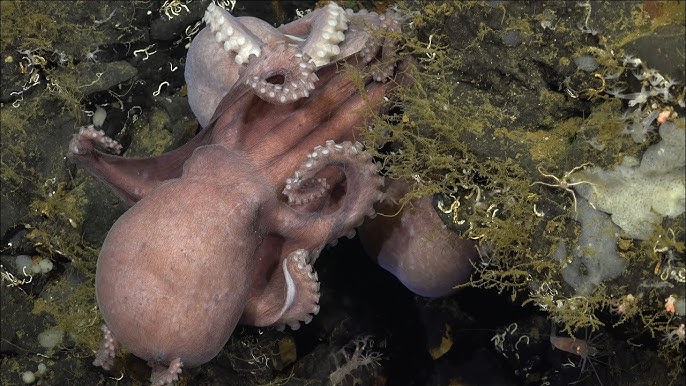Costa Rica’s Oceanic Marvel
Deep below Costa Rica’s sparkling waters lies a world teeming with wonder, and the latest discovery of a unique octopus nursery is turning heads.
A Global Rarity Emerges
Nestled almost 2 miles beneath the ocean’s surface, an international team of 18 scientists stumbled upon the world’s third-known octopus nursery. The real twist? The possibility of a never-before-seen species of Muusoctopus, a unique genus of ink-sack-less octopuses.
Exploring the Unknown: Quote from the Deep
“The enthralling discovery, situated 2,800 meters beneath the waves in Costa Rican territories, is a stark reminder of the ocean’s uncharted mysteries,” proclaimed Dr. Jyotika Virmani, the esteemed executive director of the Schmidt Ocean Institute.
The Dorado Outcrop Enigma
Initially discovered in 2013, the Dorado Outcrop, a vast expanse similar in size to a football field, was thought uninhabitable for octopuses. The absence of developing embryos led researchers to this conclusion. Fast forward, witnessing Muusoctopus eggs hatching in the area has transformed scientists’ perceptions, showcasing the outcrop’s favorable conditions for juvenile octopuses.
Hot Springs and Octopus Nurseries: An Unexpected Connection
The intriguing revelation that deep-sea octopus species might brood their eggs within low-temperature hydrothermal vents – nature’s underwater hot springs – reshapes our understanding of their reproductive habits.
Behind the Expedition: The Names that Made it Happen
Facilitated by the Schmidt Ocean Institute’s research vessel, a nonprofit brainchild of ex-Google CEO Eric Schmidt and his wife, Wendy, the expedition was steered by notable scientists, Beth Orcutt (Bigelow Laboratory for Ocean Sciences) and Jorge Cortes (University of Costa Rica).
A Plea for Preservation
As captivating as such findings are, they come with a warning. Fragile areas like the Dorado Outcrop face threats from human activities, primarily fishing. Determining their protection is paramount. As Cortes passionately stated, these findings spotlight Costa Rica’s rich biodiversity, urging both awareness and conservation.

